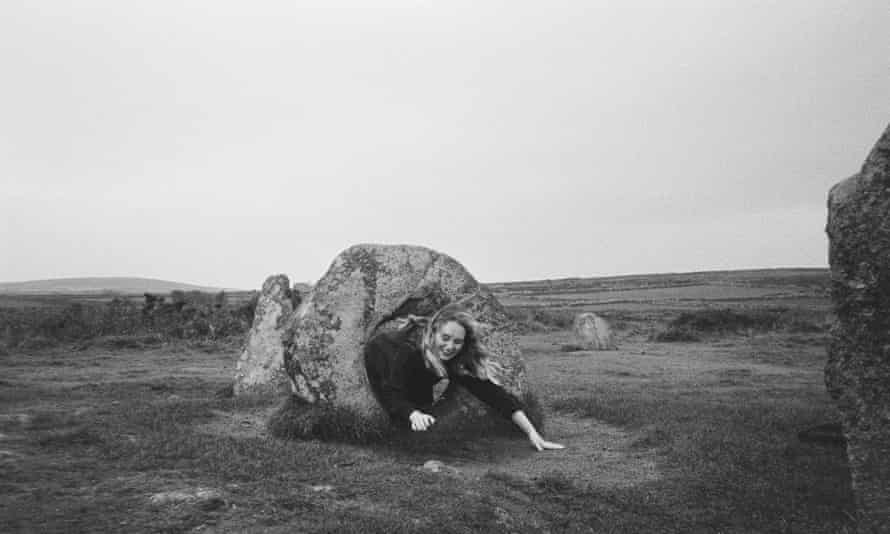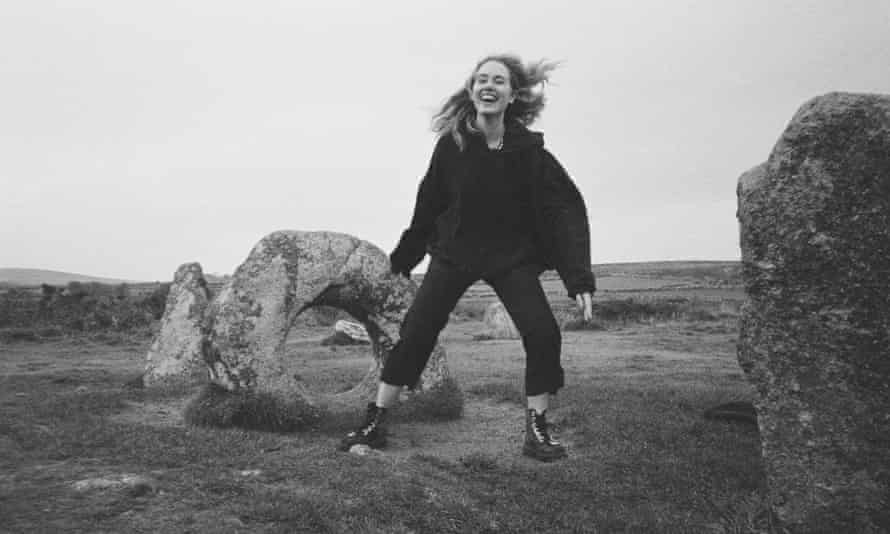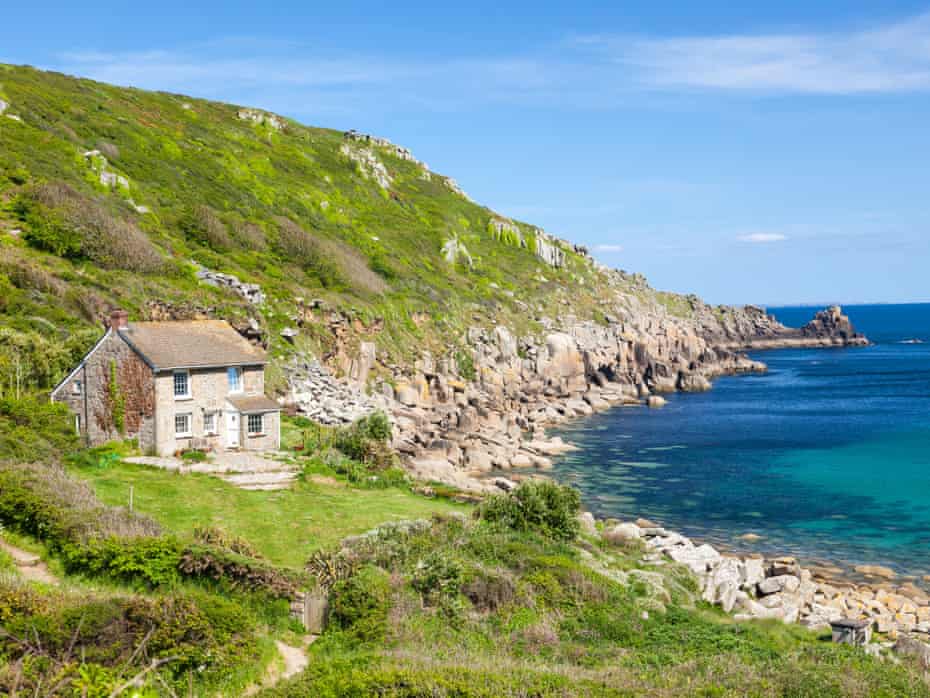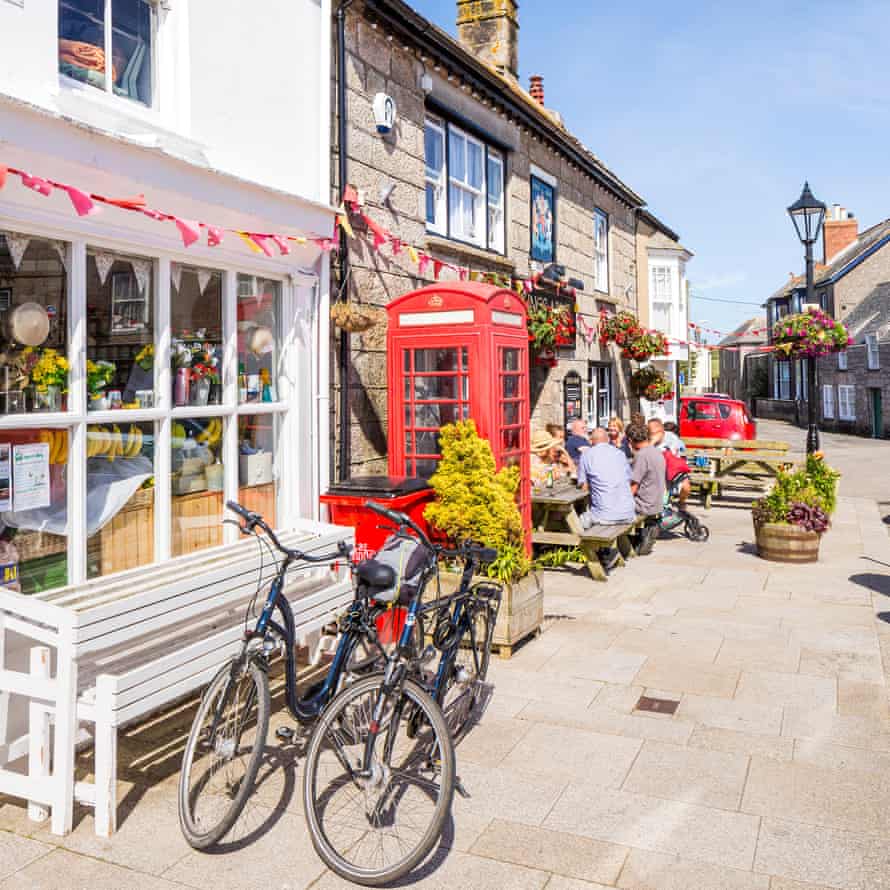On 30 December 2019, I was on my hands and knees crawling through a narrow granite ring on the stark stretch of moorland between the north and south coasts of westernmost Cornwall. My travelling companion, Amy, was waiting for me on the other side, both of us unable to contain our laughter as we chanted, “Rebirth, rebirth!” to the empty winter skies.
The granite ring was the Men-an-Tol, a bronze age monument between two upright fingers of grey rock. It takes an hour and a half to walk there from the village of Madron, a couple of miles inland from Penzance on the south coast. The route is wild and desolate, the undulating land covered in dark grey and red gorse.
For a while, Amy and I kept to the single-track road, along which the only sign of life was a single tractor grinding along slowly, its driver blowing cigarette smoke out of the window. But, city kids through and through, we wanted something other than concrete beneath our feet, and so veered off the road to clamber instead over high, thick brambles and trip in the mud at the edges of faded fields. The land seems endless in all directions here, so it came as a surprise when, nearing the Men-an-Tol, we suddenly saw the grey waves of the north coast’s Celtic Sea in the distance.


That new year trip to Cornwall’s final peninsula, West Penwith, not far from the village where my mother grew up – and from my namesake, Lamorna Cove – has remained at the forefront of my mind because it was the last adventure I took before the pandemic. As such, it has grown into something much larger and more freighted with meaning than it might have been.
Most nights, when I’m lying in bed, staring out through the same thin blinds at the same London main road beyond, I imagine what it would be like, instead, to be back with Amy, marching across this abundance of earth between two seas. (In theory we could be there this week now that self-catering properties in England are open again, but we stayed in a hostel and they don’t open, beyond an exclusive hire, until 17 May.)

There are two prevailing theories about the original purpose of the Men-an-Tol’s ringed stone: either it was part of an ancient stone circle constructed to frame specific parts of the horizon, the other stones since removed or lost to time; or it once formed part of a tomb. In Cornish folklore, the site was thought to hold miraculous healing powers, including increasing the fertility of those who clambered through the ring a number of times, preferably while naked. On that occasion, Amy and I decided against the naked part, and chose to reinterpret fertility as creative fertility, hoping our chanting would help produce a year that was less tumultuous and uncertain than the previous one had been for the both of us. (It did not.)
Twenty minutes’ drive from Madron towards Land’s End, there is a second stone ring. This one isn’t very old: it’s a replica of the original, sitting in the town centre of St Just in Penwith, one of my favourite places in Cornwall. St Just, once famed for its mining and now strung prettily with bunting, is too far off the beaten track to become as popular as St Ives or Newquay. But it has a lot going on for a small town. There are several excellent pubs – particularly the Kings Arms – a medieval granite church, galleries, hotels and several cafes. When I was living in Newlyn, a fishing town near Penzance, my elderly neighbour would drive over to St Just to get pasties from McFaddens butchers every Friday, arriving at noon as they came fresh out of the oven. One morning, he took me with him: the pasties were the best I’d ever eaten – hot and peppery, the pastry golden.

Amy and I were staying a short walk from St Just at YHA Land’s End. Accommodating up to 41 guests in 11 bunkbed rooms, it’s a friendly, cheerful place, decorated in pastel blues and yellows, with a large front lawn where people can camp for £14 a night.
The youth hostel overlooks Cot valley, or Porth Nanven, a secluded, rocky beach shielded from the winds by black-wet cliffs like curtains framing a stage. From there, a high cliff path leads to Cape Cornwall, part of an area known as the Tin Coast. This seven-mile-long Unesco-listed site was mined for tin and copper for more than 2,000 years – though all that is left of the mines now is a series of stone ruins suspended over the sea. The Cape Cornwall headland itself is dramatic and forbidding: the monument at its edge was the chimney of Cape Cornwall Mine.

On that last trip to St Just, I sat at a picnic table in the hostel garden on the first morning of 2020 among many other bleary-eyed people, each of us staring out at where the land began sloping towards the sea. I remember discussing our hopes for the coming year, our ambitious travel and life plans – none of which have come to fruition.
At the start of the pandemic, I was frustrated I would not be able to visit Cornwall for a long time. But, being required to stay in one place has its merits. It makes you more conscious of the places you miss, rather than constantly wanting to try out new, far-flung locations. This summer, if it is safe, we hope to return to St Just, where it will be less busy than other parts of Cornwall, to camp in the grounds of the youth hostel, retrace those walks we did a year and a half ago and crawl through the Men-an-Tol again, wishing this time for smaller things – not creative rebirth but some return to an approximation of normality.
Lamorna Ash’s book Dark, Salt, Clear: Life in a Cornish Fishing Town (Bloomsbury, £9.99) is now available in paperback




